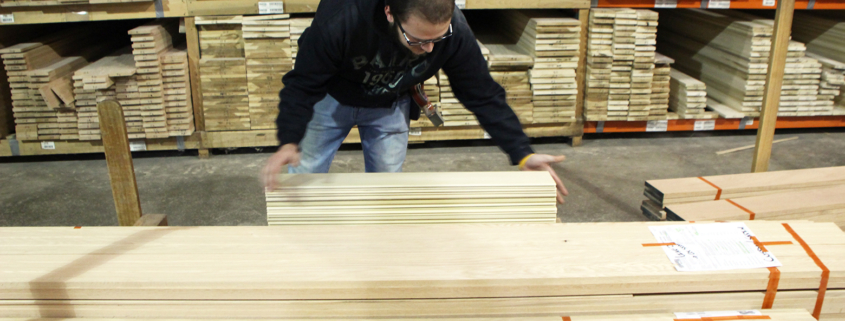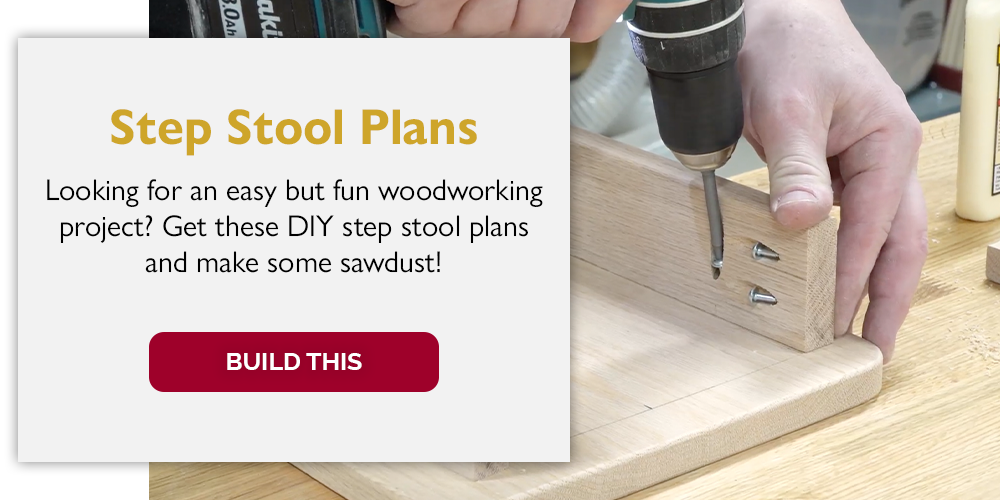Choose the Best Wood for Your Woodworking Project
Are you ready to start a woodworking project but not sure what kind of wood to use? You’ve come to the right place!
Wood is one of the most versatile building materials because it comes in so many varieties…but with all of those different types of wood, it can be difficult to know which one is best. That’s why it’s important to understand the characteristics of wood before you start your DIY project or make a purchase from your favorite lumberyard – Baird Brothers Fine Hardwoods!
So, what factors so you need to consider when choosing the best wood species for your project? Let’s find out!
Characteristics of Wood
All wood falls into two main categories: softwoods (like douglas fir) and hardwoods (like poplar, white oak, rosewood and hard maple, just to name a few). The majority of softwoods come from coniferous trees, and the majority of hardwoods come from deciduous trees (trees that lose their leaves in winter).
Wood hardness is plotted on the Janka hardness scale, which is especially helpful for projects involving hardwood lumber. Higher Janka ratings equate to increased hardness and more difficult workability, since harder woods can blunt hand tools and cutters.
It’s important to keep in mind that if you’re a woodworking beginner, hardwood lumber on the upper end of the scale can be difficult to work with, especially species like Brazilian cherry, hickory and hard maple.
Keep Your Intended Result in Mind
The end result of your project is dependent upon the species of hardwood lumber chosen. Be sure to take certain details into account:
- Are you creating a piece of fine furniture that you’re hoping to pass down through generations?
- Is ease of turning on a lathe or steam bending ability important (i.e. for creating musical instruments like a guitar)?
- Are you putting in new solid wood floors in a high-traffic area?
- Are you trying to achieve a timeless look or do you want something more on-trend?
Grain patterns, expansion and contraction properties, workability, durability and color are all important aspects to keep in mind when planning your project!
Hardwoods for Construction Projects
Is your project part of a home addition or other large construction project? If that’s the case, then appearance and function can both be extremely important. If you’re installing casing around a closet, you’ll want a wood species that isn’t subject to warping. If you’re framing in walls, then a softwood lumber will suffice!
Construction lumber can include anything from pine and MDF to red oak and Brazilian cherry, it just depends on the project at hand!
Medium Density Fiberboard
Medium density fiberboard (MDF) is made of real wood but is a manufactured wood product. MDF compresses wood fibers with a resin binder. MDF is stronger and more dense than particle board and doesn’t splinter like plywood when being worked.
*Remember to use breathing protection when sanding MDF; the dust is very fine and can irritate the lungs.
Veneers
Veneers are an option that can save money while still getting the look of real wood. Veneers are made by slicing certain wood species very thin and then adhering that wood species to another material like plywood or particle board.
The advantage of a veneer product is that a more expensive wood can be showcased while less expensive woods make up the majority of the construction. It’s also great for sustainability, because rare exotic hardwoods can be utilized to their maximum potential. Veneering has been used in furniture making for centuries.
In recent years, painted trim has become extremely popular. As an alternative to MDF, which can be flimsy and damage easily, many homeowners have turned to poplar or primed, finger-jointed poplar mouldings. Poplar remains one of the most economical hardwood options, which is why it’s often a first choice for painted trim, but it delivers significantly more durability and strength than its MDF counterpart.
Wood Species for Furniture and Decor
If you’re building new kitchen cabinetry or a showstopping bookcase, you’ll certainly want to think about incorporating a species known for its beautiful grain pattern! If the final destination for your project is outdoors (think outdoor furniture, like our recent potting bench project), then you should select a wood that is decay and insect resistant.
A popular wood for outdoor furniture is teak (which is also popular for boat building) because of its water resistance and tight grain (which give it strength). Cedar is also highly sought after, especially for planter boxes and picnic tables.
If your wood project is destined to be indoors, an important consideration is how well the wood accepts stain. Wood is seldom used in a home without some sort of finishing treatment, and while some woods may have a wonderful straight grain pattern, they can be picky about accepting finishes, usually due to oil content.
Expansion and Contraction
Wood is a natural product, and as such, it can absorb and release moisture as the relative humidity changes. In wetter months, wood will take in moisture and expand along its width. In drier months, it will lose this moisture and contract. While this isn’t an issue for small projects, larger building projects must take expansion and contraction into account.
Find the Right Wood for Your Project at Baird Brothers
At Baird Brothers Fine Hardwoods, we understand how important selecting the best wood species is. Whether you’re getting ready for your next DIY woodworking project or researching flooring options for your new home, let us help you find the best species for your project. Stop into our showroom or contact us today!




